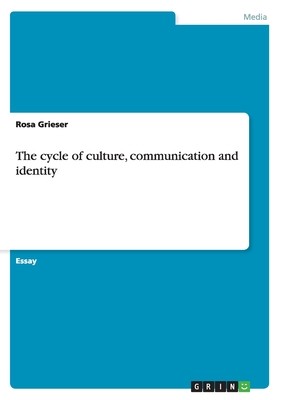
- We will send in 10–14 business days.
- Author: Rosa Grieser
- Publisher: GRIN Verlag
- Year: 2013
- Pages: 24
- ISBN-10: 3656405786
- ISBN-13: 9783656405788
- Format: 14.8 x 21 x 0.1 cm, softcover
- Language: English
- SAVE -10% with code: EXTRA
Reviews
Description
Essay from the year 2012 in the subject Communications - Intercultural Communication, grade: 1.3, Charles Darwin University, language: English, abstract: When human beings are in the company of relatives, friends and neighbors, they might take it for granted that communication is a complex continuous process which has many nonverbal as well as verbal components. It is in the encounter with a stranger or being in a strange situation which inherent uncertainness. Having expectations how a stranger may act or how to act in a strange situation can help to reduce this uncertainness. These expectations are based on particular social convention, which are part of what is vague called culture (Payer: 2011). If a situation cannot meet the expectations, people become suddenly aware that, because all customary behaviors convey information, they struggle to understand the happening until they know the particular cultural code (Leach:1996:9p ). A cultural code describes the system of representation by which signs and their meanings are arranged by cultural convention to temporarily stabilize significances in particular ways (Barker 2005: 436). Traffic lights are coded in a sequence: red for stop, orange for pause and green for go.
EXTRA 10 % discount with code: EXTRA
The promotion ends in 15d.13:29:02
The discount code is valid when purchasing from 10 €. Discounts do not stack.
- Author: Rosa Grieser
- Publisher: GRIN Verlag
- Year: 2013
- Pages: 24
- ISBN-10: 3656405786
- ISBN-13: 9783656405788
- Format: 14.8 x 21 x 0.1 cm, softcover
- Language: English English
Essay from the year 2012 in the subject Communications - Intercultural Communication, grade: 1.3, Charles Darwin University, language: English, abstract: When human beings are in the company of relatives, friends and neighbors, they might take it for granted that communication is a complex continuous process which has many nonverbal as well as verbal components. It is in the encounter with a stranger or being in a strange situation which inherent uncertainness. Having expectations how a stranger may act or how to act in a strange situation can help to reduce this uncertainness. These expectations are based on particular social convention, which are part of what is vague called culture (Payer: 2011). If a situation cannot meet the expectations, people become suddenly aware that, because all customary behaviors convey information, they struggle to understand the happening until they know the particular cultural code (Leach:1996:9p ). A cultural code describes the system of representation by which signs and their meanings are arranged by cultural convention to temporarily stabilize significances in particular ways (Barker 2005: 436). Traffic lights are coded in a sequence: red for stop, orange for pause and green for go.


Reviews